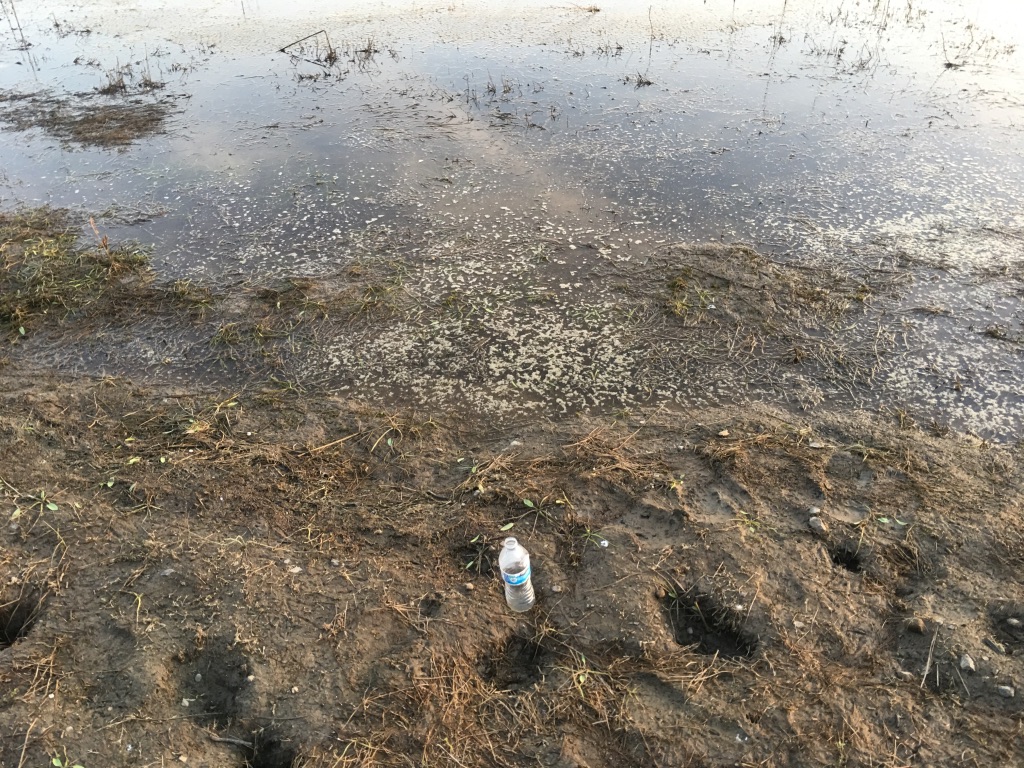New paper out in @PNASNews from joint collaboration with Dan Goldman's lab on collective dynamics in worm and robotic blobs.. A thread... https://www.pnas.org/content/118/6/e2010542118
Back in 2016/17, i stumbled upon these california blackworms in Lake lagunita at Stanford during my postdoc... i vividly remember this since it had recently rained and i was out there sampling the water curious to what organisms appeared in a dry lake...
Zoom forward a couple years when I started my lab as a faculty @GeorgiaTech and decided to explore how thse forms formed fascinating aggregates (to avoid evaporation or water removal)... heres a macro video showing worms entangling...
Together with a phenomenally talented research scientist Dr. Yasemin Azkan-Oydin who was working with Dan Goldman on earthworms and robotics, we started exploring this `living ball of dough'... Yasemin and I playing with worm blobs in lab realizing they act as complex fluids...
We discovered these worm blobs are an interesting phase of `entangled active matter', that can tangle, flow, bounce...
The first question we aimed to answer is WHY worms form a blob. Now since these are aquatic worms, we suspected that evaporation was playing a role.. indeed, we observe that worms search for water but exhibit `collective decision-making' to form hemispheres if no water located
more interestingly, we see that this behaviour is reversible, and generally observed in other non-aquatic worms such as Lumbricus terrestris and Eisenia fetida ....
Here's where we discovered something really COOL - we realized that in temperature gradients, the worm blob started to crawl and move towards the colder side (right)...
This obviously evoked all kinds of Stranger Things references in our lab... how did these blobs of worms break symmetry and move?
the key was understanding that individual worms exhibit a response to temperature -- high activity when warm, and low activity when cold... you can see it clearly as we heat up the worms... they wiggle around more
(side-note)... similar to mind flayer in stranger things, worms like to be cold and in dark... here you can see that switching on the light causes the worm blob to contract...
put together.. in a temperature gradient, worm blobs move to cold side BUT, if light is low, then the go individually, and if light is high, they move as a blob!
To understand HOW the worm blob actually moves, we looked at smaller blobs with ~20 worms... and we realized that some worms act as pullers (pulling in front) and some as wigglers (reducing friction in the back)..
To test if indeed a single worm could pull, Yasemin build a `worm gym', where she measured pulling forces of individual worms, when cold or hot...
we find that worms pull strongly when cool, and less when hot....
So, our working model is that worms at front are cooler and pull, while worms at back are hotter and wiggle... leading to symmetry-breaking...
we note that more puzzles remain. For e.g. smaller blobs more episodically (and quicker), while bigger blobs are slow but sure..
we also find that a worm by itself will find its way to cold side `stochastically', but being in a blob increases probability of making it to the cold (more deterministic)..
Thus, for an individual worm, being in a blob confers multiple survival benefits: reduced evaporation when water is scarce and reliable transport to safety when the environmental temperature becomes fatal.
Next to test this principle, we developed Smarticle Blobs aka SLOBS, by using meshes and pins on Dan Goldman's previous work on smarticle robots...
we program two gaits in these robots - a crawl and a wiggle gait - to mimic the worms pull/wiggle behavior. Unlike worms, the robots respond to light as its easier to program a light sensor..
The key result: we need both crawl and wiggle gaits to observe emergent locomotion of the SLOBS - if only either one, no collective locomotion is observed.
Since with robotic blobs we can measure and carefully vary different parameters, we explore the full design space and identify how the robot blobs can be energy efficient, entangle, disentangle etc..
Thanks to @NSF for funding support. We also made outreach comics in English/Spanish with @linseedling. More ongoing work continues in lab as we are excited to discover more emergent behaviours in this seemingly mundane blob of squishy worms...

 Read on Twitter
Read on Twitter


















